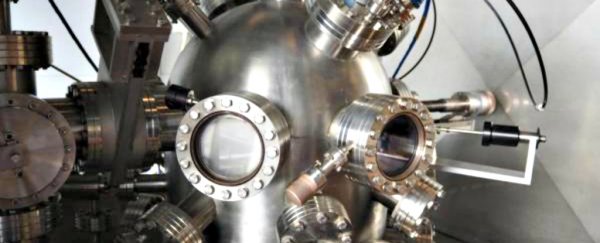Researchers have generated a new type of electric current that's superconductive - also known as a super-current - which means it can travel through a material without losing any energy.
And they've already managed to send this new super-current across a record-breaking distance of 600 nanometres.
That might not sound like much, but it's enough to show that the new technology could be used outside the lab - for example, to power a hard drive without energy loss, and it's the furthest this alternative super-current has been pushed so far.
The new super-current is made up of electron pairs all spinning the same direction, and scientists from the Leiden Institute of Physics in the Netherlands were able to propel it across a wire made of chrome dioxide.
The spin of these electrons is important, because until recently, researchers didn't think it was possible to generate a super-current with pairs of electrons spinning in the same direction.
Superconductivity - the incredible ability for an electric current to flow through a material with no resistance - was first discovered by Nobel laureate Heike Kamerlingh Onnes back in 1911.
Since then, superconductivity has become an important, albeit expensive, part of modern technology, and is used in everything from MRI machines to maglev trains.
But the frustrating thing is that we still don't really know how the phenomenon works, or how to make it more efficient.
And if we could just figure out how to make superconductivity happen at temperatures closer to room temperature, it would revolutionise technology - including providing power grids that wouldn't waste 7 percent of their electricity as a result of resistance.
Since 1911, though, we have learnt some important lessons about superconductivity.
Around 50 years after the phenomenon's initial discovery, researchers discovered that electrons in superconductors were spinning in pairs - and they figured that this must be the key to super-currents.
The idea was that electrons were only able to escape the classic rules of electrical resistance by spinning in opposite directions - effectively cancelling each other out and creating a net spin of zero.
That assumption has since been proven false, and in recent years, it's been shown that electrons in super-currents can indeed have a net spin. But we're just beginning to realise how that works.
In this latest research, the Dutch team used chrome dioxide, which only hosts electric currents with a net spin.
After they cooled the metal down to a superconducting state (using the device pictured at the top of this page), the team was able to generate a super-current, with electron pairs all spinning in the same direction.
This new type of current was surprisingly strong - generating a current of 1 billion amperes per metre squared.
"That's powerful enough to flip magnets, potentially facilitating future hard drives without energy loss," explains the press release.
These types of powerful hard drives would be based on spintronics - the study of the spin of electrons.
Even more impressively, the team was able to bridge a 600-nanometre gap with the new type of current.
That might seem pretty small - as the team notes, "bacteria are bigger" - but it means that electrons pairs survive long enough for practical use outside the lab.
There's still a long way to go before we start using this new type of electric current in our everyday technology, but we now have a better understanding of how these alternative super-currents work, and how powerful they could be in the future.
"Our findings provide the first seriously viable route toward building scalable device architectures for superconducting spintronics," the researchers conclude in Physical Review X.
